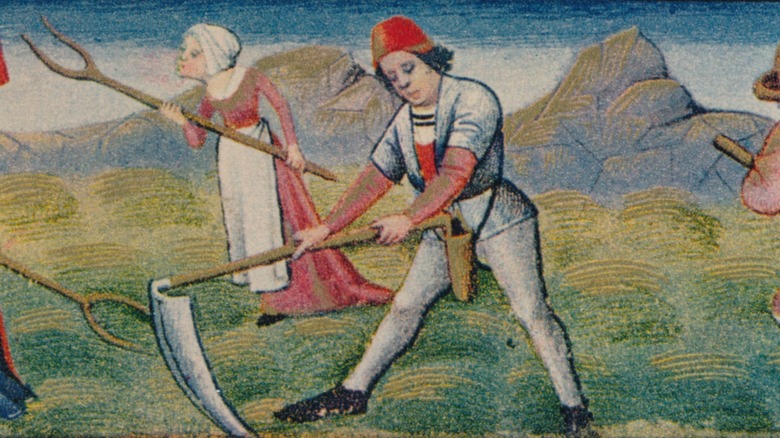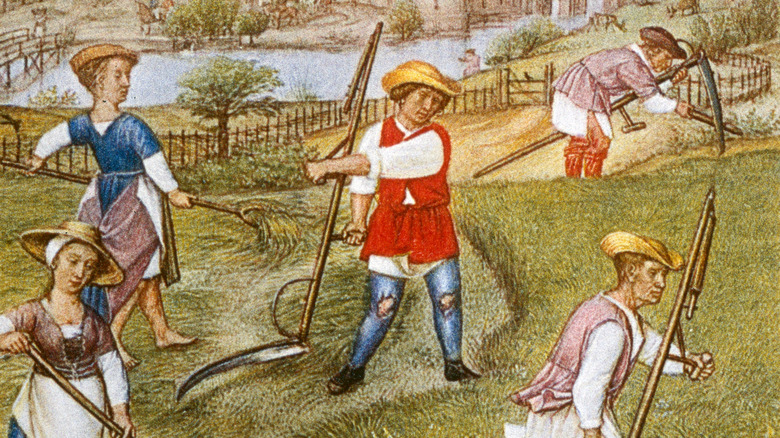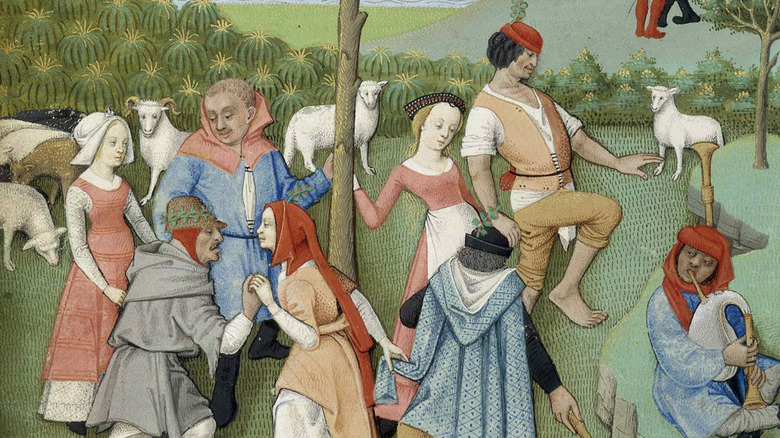Medieval Peasants May Have Worked Less Than Modern Americans
From around A.D. 500 to A.D. 1500, the medieval period reigned over Europe, a time sometimes called the Dark or Middle Ages, according to Medieval Times. The world order in Europe back then was called feudalism, dividing society into two camps: the lords, or aristocracy, who owned land, and the peasants or serfs who worked that land for their lord in return for protection and other services like representation in court (via Britannica). It was a backbreaking lifestyle, filled with long days and hard labor, to be sure. But, medieval peasants may have actually worked less than many Americans do today, according to some modern scholars, per History Collection.
That being said, there's no question that medieval peasants often worked from dawn to dusk, as author Juliet Schor explains in her book, "The Overworked American: The Unexpected Decline of Leisure" (via MIT). Compared to a modern 9-to-5 job, that sounds like a long day. And, few of us are responsible for the difficult farming and agricultural tasks peasants performed daily, and certainly not in the poor conditions and with the basic tools they used. There are a few crucial differences, though, between what work meant back then compared to what work means now. In some small but very important ways, the life of a medieval peasant may not have been as bad as it seems.
Medieval peasants took more breaks
Ever find yourself wishing you could crawl under your desk to take an afternoon nap? That's just what medieval peasants were allowed to do. Not only that, field-laboring peasants from this period were given ample breakfast, lunch, and dinner breaks, among other rest periods. What's more, that schedule was only maintained until the harvest was finished. After that point, many peasants took as many as eight weeks off for some r'n'r. That's a far cry from our standard eight days vacation today, as History Collection explains — if you're lucky to get even that.
Not only were there more breaks in the workday of a medieval peasant, but they also enjoyed many more holidays for religious celebrations and feasts. All combined, the medieval peasant worked on average only eight hours a day with definite peaks throughout the harvest. When less work needed to be done in the off-season, they might not work at all. Compare that to numbers from the Bureau of Labor Statistics, and that's a pretty short workday on average. In medieval France, for example, serfs had more than 50 Sundays off of work guaranteed, with 90 additional days off, and 38 holidays, as "The Overworked American: The Unexpected Decline of Leisure" (via MIT) points out. The average Spanish peasant had an average of five months off each year.
Medieval work days were tracked differently
What's also notable about work in the Middle Ages is that peasants sometimes worked anywhere from 120 to 170 days in a year, depending on conditions and season, per Juliet B. Schor's book "The Overworked American." Compare that to the 261 days Americans now work on average, according to Zippia. And, when we now say "workday" we typically think of at least eight hours. In medieval times, though, workdays or "days-works" were tracked in half days –- one-half day spent in labor was considered a full day worked, while if a serf labored all day it counted as two days work, according to Schor.
Compared to life with electricity, central air conditioning, heating, and modern medicine, few modern workers would return to a life of hard labor such as that of a medieval peasant. No doubt, though, their real working conditions go to show that our modern work-life balance leaves much to be desired.


